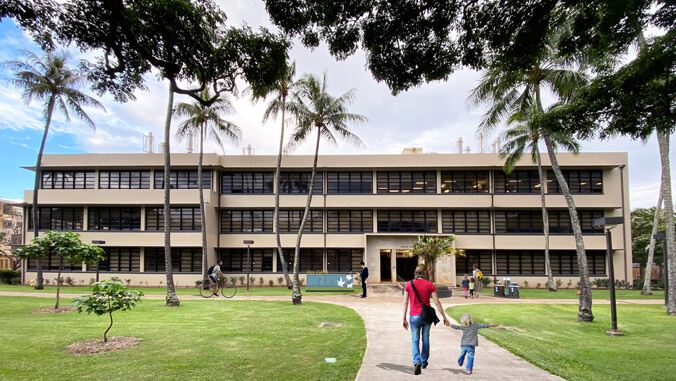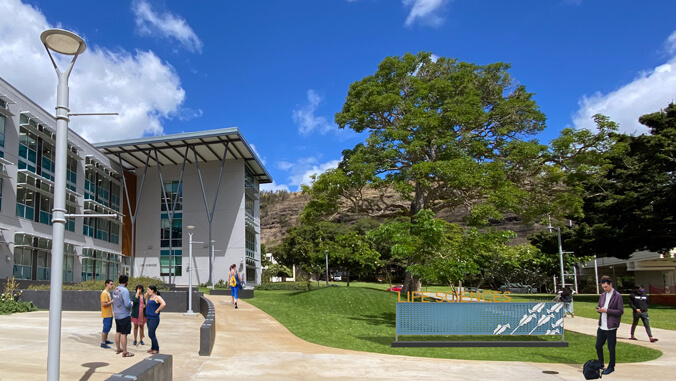
The University of Hawaiʻi at Mānoa will begin installing new bilingual signage based on kānaka ʻōiwi (Native Hawaiian) knowledge and values. The new signs will be placed in front of 20 of the campus’ main buildings starting July 2022 with the Life Sciences building and Bilger Hall. The first two signs will be in place in time for the start of the fall 2022 semester.
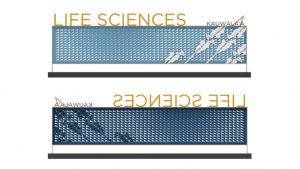
The project aligns with UH Mānoa’s commitment to being a Native Hawaiian Place of Learning that includes evoking the importance of place among haumāna (students), staff, faculty and the community. Kānaka ʻōiwi divided the islands into ahupuaʻa (land division usually extending from the mountains to the sea) that were made up of subdivisions called ʻili ʻāina, each with its own name and purpose. According to an 1882 historical map of Mānoa, multiple ʻili ʻāina intersect on the Mānoa campus.
The new signs will feature the building’s name and the name of the ʻili ʻāina the building is located in. There will also be markers installed in different locations on campus that will indicate where ʻili intersect.
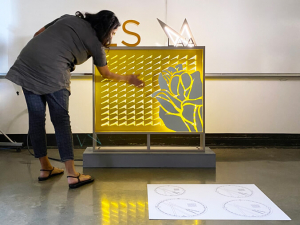
The first ʻili marker is tentatively scheduled to be installed in early 2023 near Hamilton Library where four ʻili intersect—Wailele, Kauwalaʻa, Puahia and Pilipili.
“This project represents a collective effort to continue to intertwine precious ʻike Hawaiʻi (ancestral Hawaiian knowledge) within the campus’ very foundation and identity,” said UH Mānoa Provost Michael Bruno.
“We aspire to expand upon our integral mission to become a Native Hawaiian Place of Learning that is reflective of Indigenous ways of knowing deeply rooted throughout Hawaiʻi.”
Nānā i ke kumu, Look to the source
The initial concept for the unique project was developed through collaborative research and proper consultation with UH Mānoa kānaka ʻōiwi faculty, staff and executive leadership. The university then commissioned renowned Hilo-based design studio Sig Zane Kaiao to create the overall cultural concept and the unique watermark used on the signage and markers that features an ʻohe kapala (bamboo stamps) design.
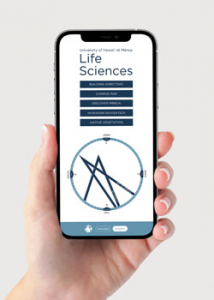
The placement of the signs is based on how ancient kānaka ʻōiwi placed heiau (temples). Each sign will point toward different landmarks in and around Mānoa, such as the Waʻahila Ridge or Lēʻahi (Diamond Head) on the coast. There will be a medallion at each sign with a QR code that will link to an interactive website with information about the specific location.
The signage and wayfinding project is guided by the UH Mānoa Framework for the Future, a commitment that campus projects represent UH Mānoa’s core values as identified in the Mānoa Strategic Plan, and informed by regularly updated data. Launched in Summer 2019, the project is spearheaded by the UH Community Design Center (UHCDC) at the UH Mānoa School of Architecture, led by principal investigator Brian Strawn and co-investigator Karla Sierralta, along with a team of staff, student research assistants and graduate students.
The project is a joint venture of the UHCDC, Office of the Vice President of Administration, Sig Zane, Nālani Kanakaʻole, Kūhaʻo Zane (Sig Zane Designs), Daniel Friedman (UH Mānoa Campus Architect), Kaiwipunikauikawēkiu Punihei Lipe (UH Mānoa Native Hawaiian Affairs Program Officer) and Wayfinding Consultants (Two Twelve).
